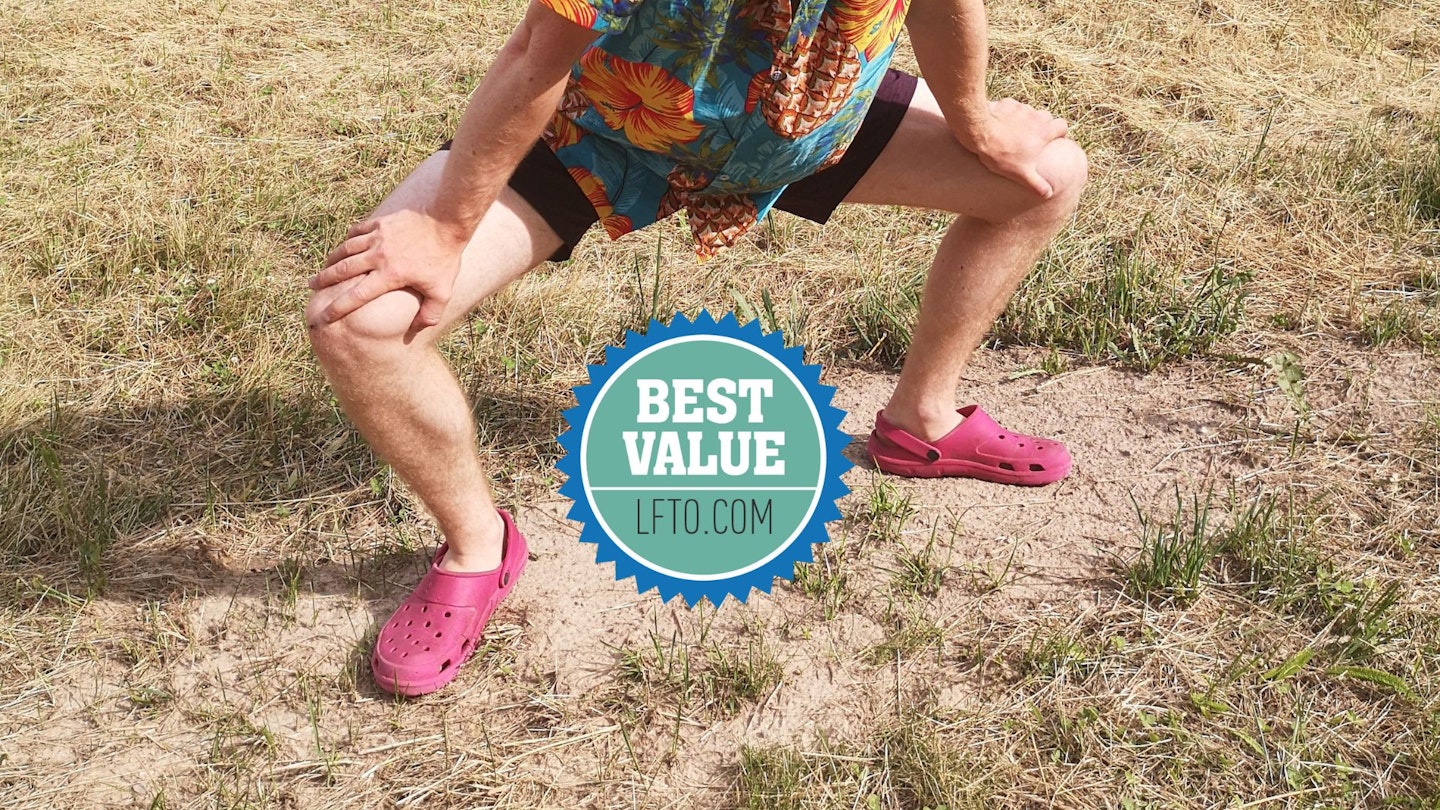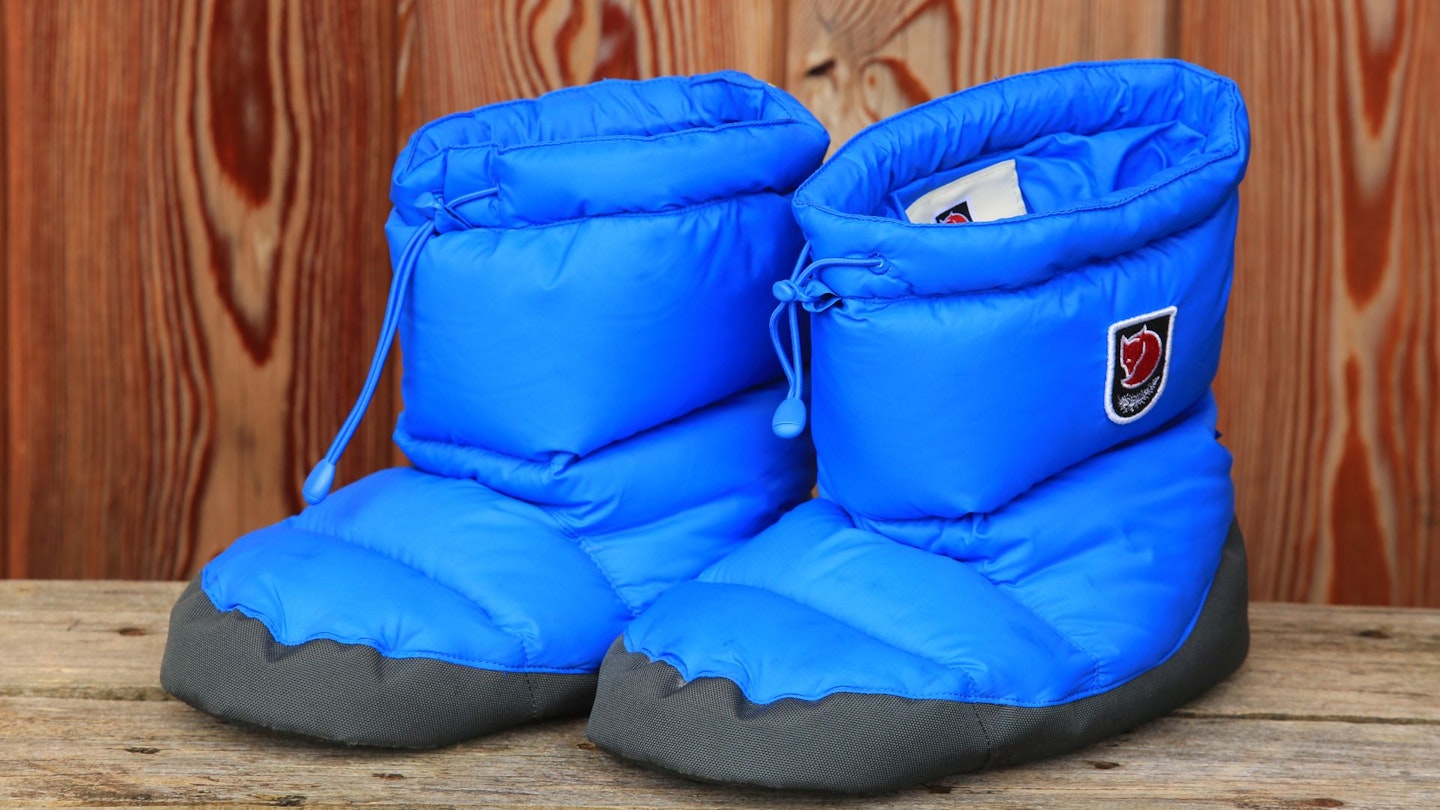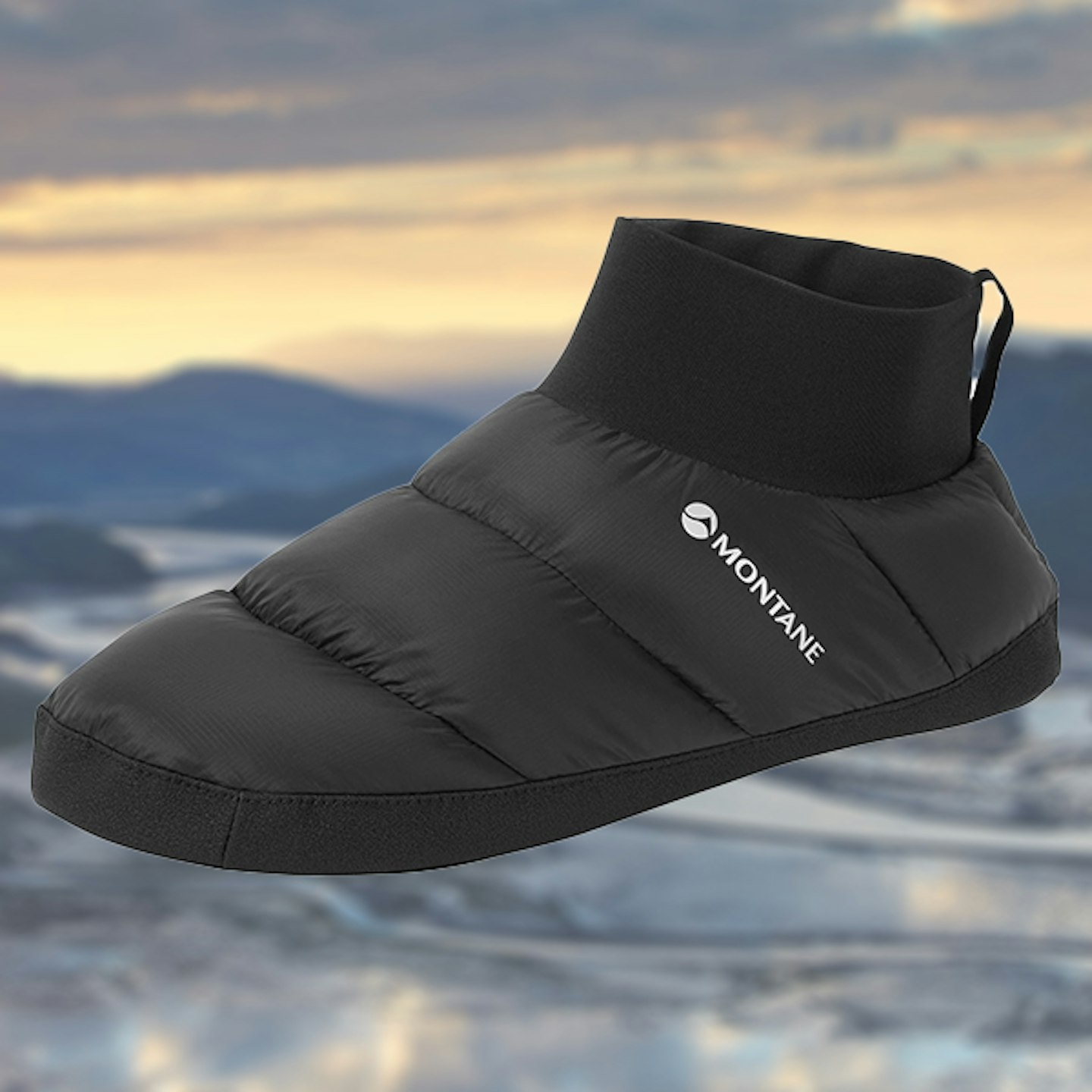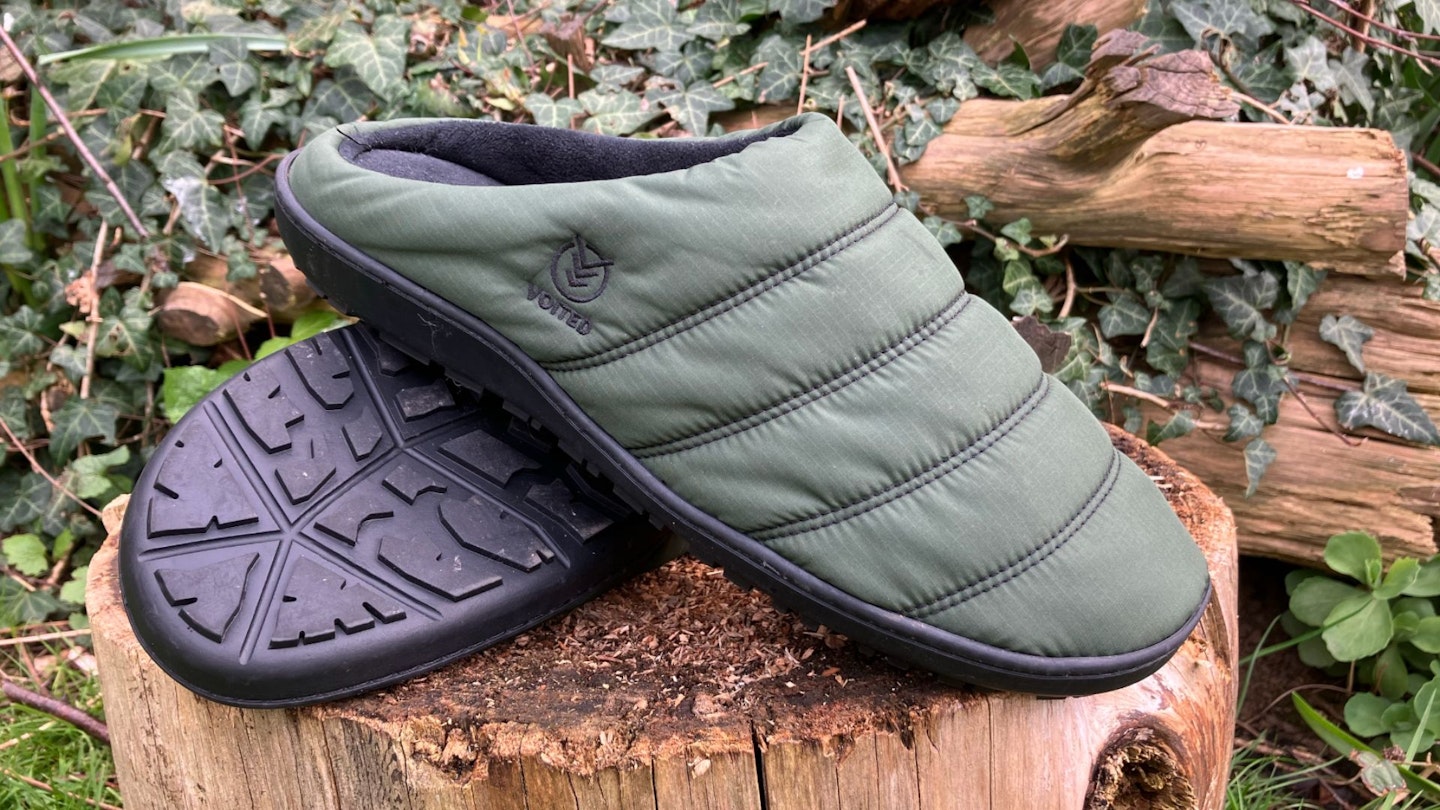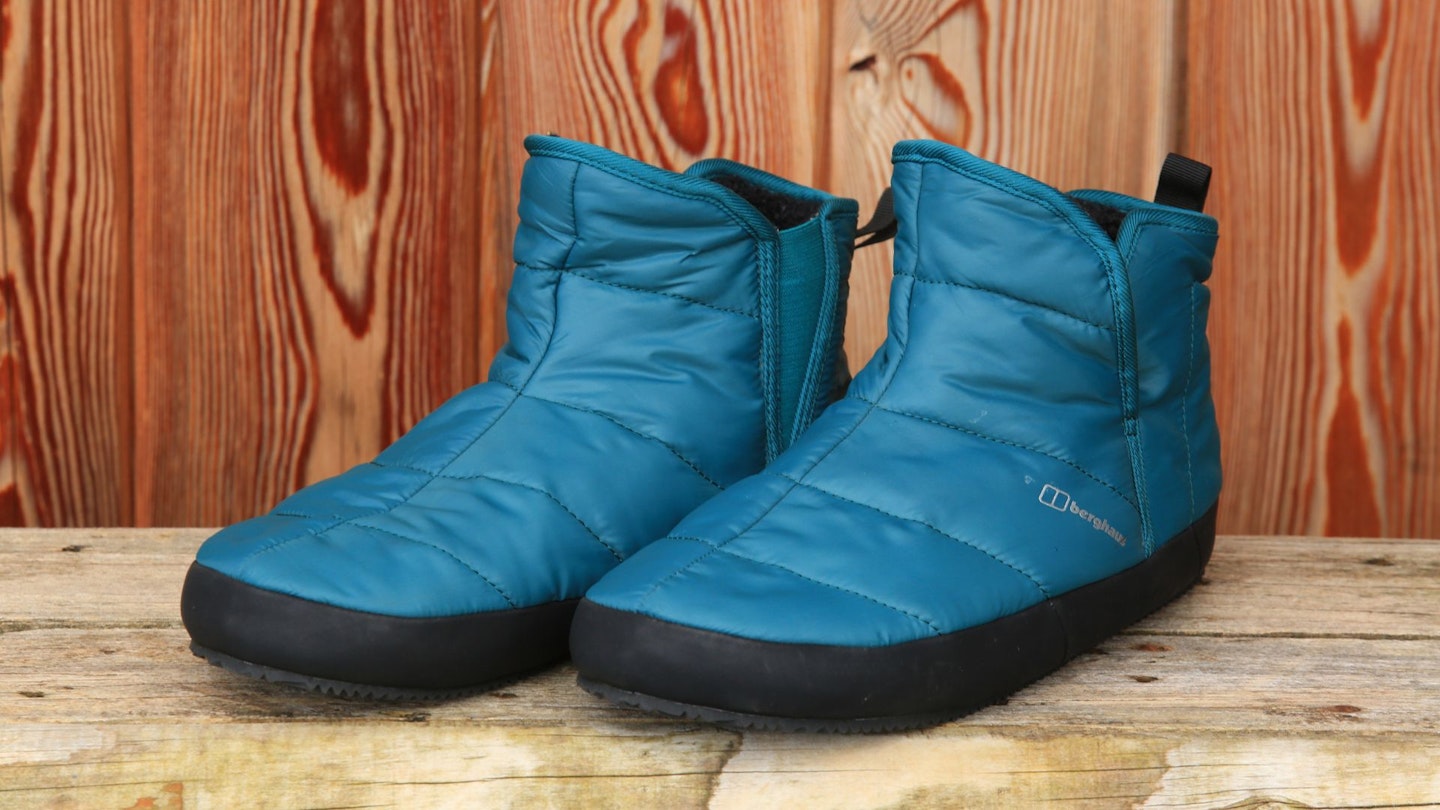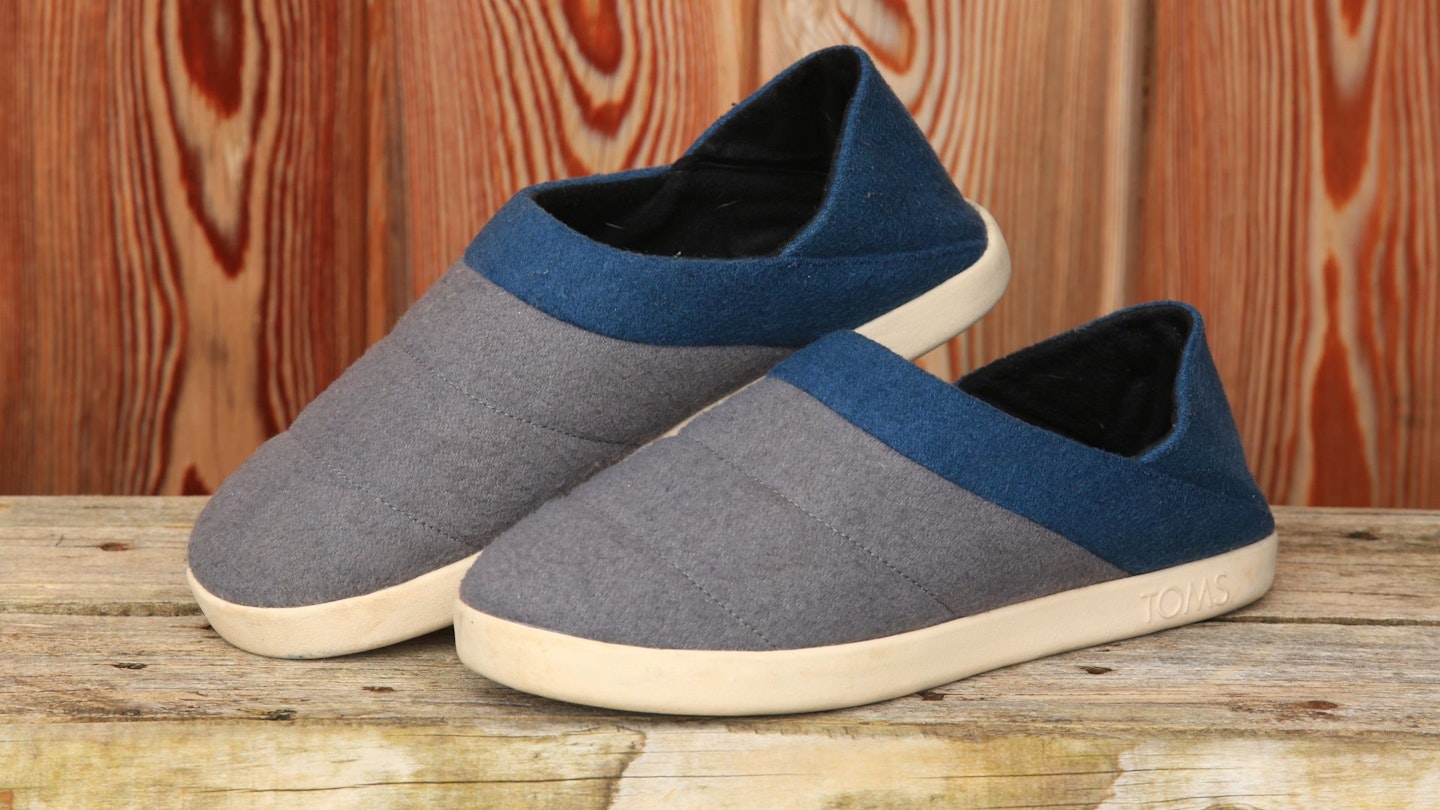At the end of a long day on the trails, there's no greater pleasure than the moment your feet are freed from walking boots and socks. Well, except if you've been clever enough to bring something even more comfortable. A pair of designated camping slippers will make you feel both snug and smug.
From caravans and campsites to high mountain hostels, there are plenty of places where a plush pair of slippers is a real treat. Nice as they are to wear, they can also be extremely important when it comes to keeping your toes at a safely warm temperature in icy climates - expedition booties for basecamp are more of a necessity than a luxury.
But even in milder conditions, it's never much fun being permanently stuck in your walking boots, so here are some of the best camping slippers on the market – tried and tested.
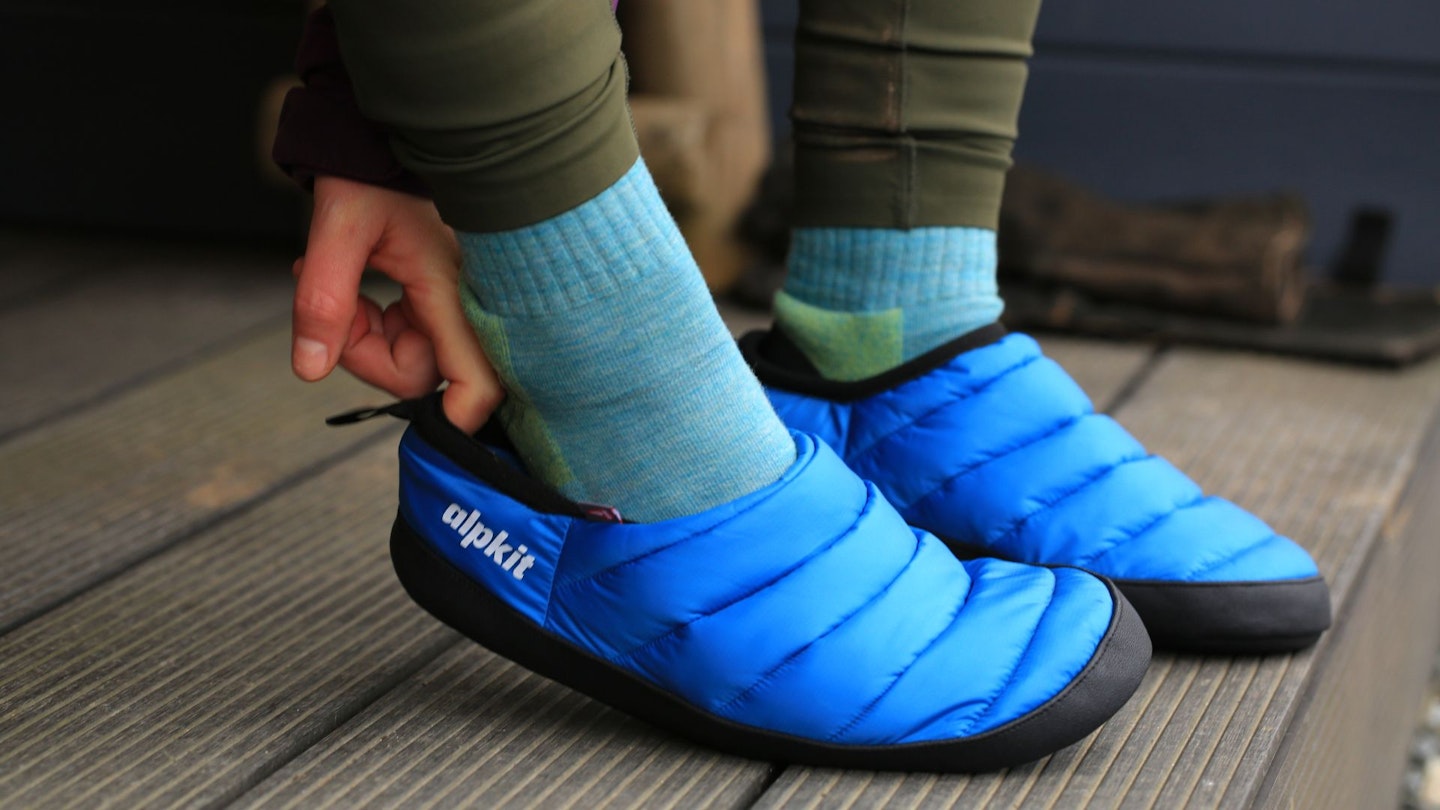
What are the best camping slippers of 2025?
We aimed for a wide range of choices on this group test. While it is tempting to always go for top-of-the-line products, not everyone needs a £145 pair of down expedition slippers (gorgeous though they are). Sometimes you'll want something just to trek to the loo and back; sometimes you'll want something with a little more insulating power. Take a look at our picks and see which slipper best suits your style.
Best in test: The North Face Base Camp Mules
Best value: Crocs Classic Clog
Most versatile slipper: Xero Pagosa
Best for bothies: Montane anti-freeze down slippers
Best for expeditions: Fjallraven Expedition Down Booties
Editor's note: This article was last updated in summer 2025. And we'll be testing plenty more pairs of slippers in bothies this winter!
How we tested the best camping slippers
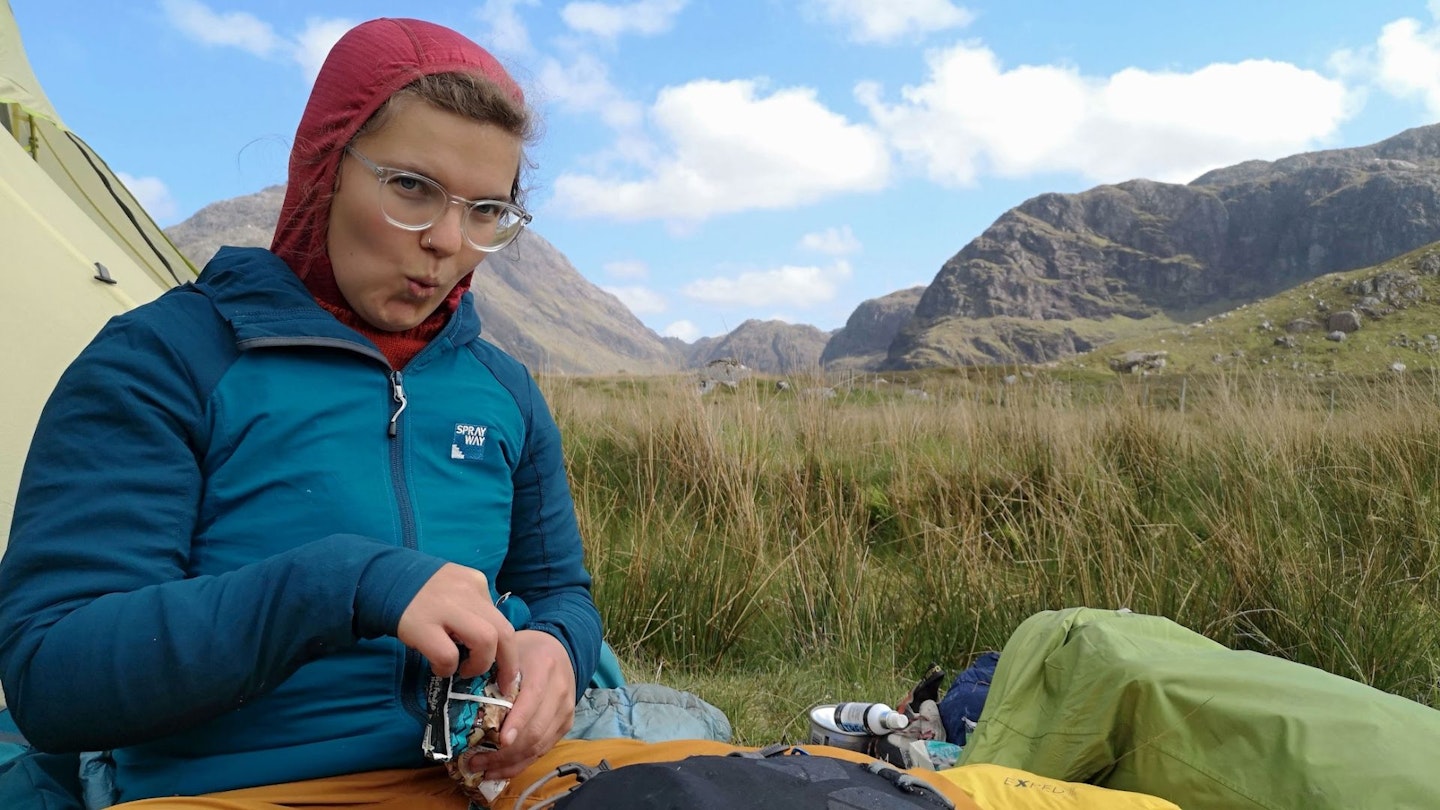
The tester for the smaller versions of these slippers was LFTO writer Fliss Freeborn, and she employed her long-suffering partner, Lewis, to test the larger sizes. Before testing these slippers recently, Fliss hadn't taken her beloved Crocs off since 2017 - but she's very glad she did. She has worn each slipper camping, driving, in bothies, huts, to the pub and now regularly packs a pair to visit the library.
The Best Camping Slippers reviewed:
For wandering around camp – either on a fully serviced campsite or a high wild camp – it’s nice to have something other than your hiking boots to slip into. But if you’re still outside, so you'll need something a little tougher than your average house slipper.
The textured raised footbed of the The North Face Base Camp Mules deliver traction and durability on both wet and dry surfaces, providing exceptional grip on slippery ground.
They're made from recycled materials and can be returned to The North Face at the end of their life for recycling - that's a plus on sustainability from us.
Pros
- Protective construction
- Sustainable recycling process
- Good grip on difficult terrain
Cons
- Not the warmest slipper on test
| Weight | 257g per slipper |
| Upper | 100% recycled p.e.t. mesh across the top of the foot and a 50% recycled polyester-spandex spacer-mesh heel |
| Sole | 30% Recycled EVA |
| Sizes | 4–14 (whole sizes) |
Park your opinions a moment and go with us on this. Yes, Crocs are regularly put forward as the kind of footwear that should be kept out of the hills at all costs, but as anyone who’s spent time in Alpine huts and refuges (or even Skiddaw House hostel) will know, they have a place.
Crocs are also lightweight enough to be strapped to the outside of your bag, and they're made form eco-friendly foam, which can apparently be cooked and eaten if you get really desperate.
In many places, crocs are often provided to be worn inside once your boots have been removed, but if you have your own pair, they’re equally perfect for wearing around camp to let your feet breathe.
Whether you choose to wear them with or without socks is up to you. In the winter, thick socks and crocs are a surprisingly warm and insulating option, at half the price of down-filled booties.
Pros
- Provides excellent airflow to feet
- Surprisingly robust
- Incredibly stylish
Cons
- Simply too stylish for some people
- Slippery on wet terrain
| Weight | 176.5g per slipper |
| Materials | Fully moulded Croslite |
| Sizes | Women's 4-10 | Men's 3-15 |
The Xero Pagosa is an unusual shoe. It's a slipper, technically, but the supremely grippy sole, outstanding comfort and vegan wool upper makes it feel more like a soft and flexible clog.
They're certainly one of the most versatile shoes on test, at home in a tent, bothy, hut, campsite, supermarket or library. We love them for driving home in after a hill day, which is actually a whole new category of shoe in itself.
They're absolutely ideal for camper vans, and in fact do equally well as a shoe for surfers or swimmers when they're getting changed. We also like the fact you can wear them as a quick slip-on due to the collapsible heel. Sadly, they're not crampon compatible, but you can't have everything.
Xero's schtick is that they're a barefoot-friendly brand, complete with thin soles, zero drop and wide toeboxes. So don't expect a highly cushioned sole from the Pagosa - the 4mm removable insole does provide some comfort but the main selling point of these is that they fit your foot like a glove, moving with the natural flex of your feet.
The Pagosa Slippers are also very packable, weighing just 138g for the women's size 37. A word of warning, however: if you're a UK customer, order your usual size in the EU number and ignore the UK one - the sizing on Xero's website seems to be oddly calibrated.
Pros
- Brilliantly versatile
- Very lightweight
- Grippy sole
Cons
- Double check sizing before buying
- Barefoot feel won't suit everyone
| Weight | 138g (Women's 37) |
| Material | Vegan wool upper |
| Sole | 4mm thick FeelTrue rubber sole |
| Insulation | Vegan wool |
| Sizes | Womens 3.5-10.5 | Mens 5.5-14 |
Look, these ludicrously expensive. But let it be known that that that little leather fox you see on every Fjallraven product also indicates that you're getting incredibly high quality gear, made with durable, sustainable materials. Their stuff just works, and the Expedition Bootie is no exception: it's stupidly warm, very comfortable and we like the elastic drawstring which keeps drafts out.
They also pack down very lightly, taking up little room in the pack. We've used them for cold nights in tents and bothies, and have been impressed with how well they perform.
The downside (if you'll pardon the pun) is that feathers do not do well when wet - you'll need to store these in their own waterproof drybag if they're going in an expedition rucksack. And yes, obviously £145 is daft for a pair of slippers - but if you're on a funded expedition, or just fancy having really warm feet in a pair of slippers that'll last forever, then it might just be worth it.
Pros
- Very warm
- Very light
- Supremely comfortable
Cons
- The eye-watering price
| Weight | 225g per slipper |
| Material | Recycled nylon and polyester |
| Sole | 100% polyamide (recycled) |
| Insulation | 54g of 700-fill goose down |
| Sizes | S, M, L, XL |
If you’re after a pair of ‘just-in-case’ slippers, these are perfect. Their down insulation (90/10 water resistant fluorocarbon-free HyperDRY down at 750+ fill power) makes them both comfortingly warm and highly packable. The internal foam sole unit is removable to make these slippers even more compact and a stuff-sack is supplied to aid stowage.
The outer sole is anti-slip and toughened, as are the lower side walls to improve their abrasion resistance on harsh surfaces. Both the outer and the lining are made from 100% recycled materials.
Pros
- Excellent insulation
- Stuffs well
- Great eco-credentials
Cons
- Foam outsole can easily get wet
| Outer | Recycled Pertex Quantum w/ PFC-free DWR |
| Fill | 750-fill down w/ PFC-free HyperDRY treatment and PrimaLoft Black ThermoPlume |
| Lining | Recycled PEAQ Down ECO w/ PFC-free DWR |
| Sole | Foam |
| Sizes | XS-XL |
This is a serious bit of slipper, which is at its best on a campsite for people who want a bit more luxury than their tatty old crocs. The Voited Soul slipper is warm, well-built, and incredibly comfy thanks to the combo of a memory foam inner sole and a fleece lining that feels like you’re slipping your feet inside a pillow.
As well as the comfort, you get hand-stitched and water-repellent Ripstop outer fabric that feels built to survive the kind of bumps and scrapes you’d expect on a camping trip. We’re also big fans of the solid and grippy rubber outsole, which is bendy and flexible enough to keep up those comfort levels.
For the sustainability-conscious campers, you’ll be pleased to hear the outer fabric is made from 100% recycled bottles, water-based gluing is used in the manufacturing process, and the fact they’re hand-stitched reduces energy consumption.
They aren’t the lightest camping slippers at 559g (size EU 43-45) so we’re not sure we’d use them on wild camps, but they’re fantastic for wearing around a campsite or pottering in your garden.
Pros
- Supreme comfort
- Water-resistant
- Grippy outsole
- Good eco-credentials
- Machine washable
Cons
- Not the lightest
| Outer | Recycled REPREVE 50D polyester w/ fluorine-free Bionic Finish Eco DWR |
| Fill | Fleece |
| Lining | Brushed fleece |
| Sole | Hand-stitched outsole |
| Sizes | S,M,L,XL |
| Weight | 559g (per slipper) |
A great, lightweight slipper that's perfect for bothies, huts and tents. The Alpkit Refugio is synthetically insulated, meaning you don't have to be paranoid about getting them wet or damp in the same way you would for down.
They're also affordable, comfortable and easily pack down - and at 190g per pair, they're pretty great for lightweight expeditions where grams are at a premium.
The memory foam insole is very comfortable, and the baffled uppers do keep most of the cold out - we just wish they came slightly higher up the ankle, and we're not convinced that you'd be able to wear the sole outside for any great lengths of time.
However, Alpkit do score highly on sustainability for the Refugio - the fill and upper are made from 100% recycled material, and the coating is PFC free. Overall, this is a great value choice from a reputable mountain brand.
Pros
- Great sustainability credentials
- Memory foam insole
- Very lightweight
Cons
- Not the grippiest sole
- Ankles might get cold
| Weight | 95g per slipper (M size 6) |
| Material | Recycled nylon w/ PFC-free DWR |
| Sole | PU |
| Insulation | 100% recycled Primaloft Thermoplume |
| Sizes | 3-13 |
The Berghaus Bothy Booty, as well as having an incredibly alliterative name, is a great all-round slipper for colder winter nights. We found it to be one of the warmest slippers on test, with its full ankle coverage coming up trumps during cold bothy adventures.
It's also surprisingly grippy in comparison to the other booty-style slippers on test, with a high-traction sole that makes it suitable for occasional outdoor use.
The fleece lining is protected by durable, water repellent fabric which beads well, and the whole boot feels well made. Berghaus also have an in-house repairs team should something go awry, promising to fix any broken gear free of charge - sustainability points galore there.
However, the one drawback of these slippers is their heft. They weigh over a kilo for a pair, which any ultralight runner will tell you, is a lot. If you have the weight and space to bring these with you for a bothy trip, then they're well worth the extra room, but if you're shaving grams then you'll be better off with something lighter.
Pros
- Very warm
- Durable
- Comfortable and soft interior
Cons
- Heavy
- Will be too warm for some
| Weight | 535g per slipper |
| Material | 70% Polyester, 25% Polyurethene, 5% Elastane. |
| Sole | High traction rubber outsole |
| Insulation | 100% recycled polyester, Oeko-Tex 100 certified |
| Sizes | 3-12 |
These are not the sort of slippers you can bung into an expedition bag and forget about: they're heavier, bulkier and more like a house slipper - but if you're going away for a longer period of time where space and weight isn't so much of an issue, then these have to be on your list to take.
The Ezras strike the balance between warmth and breathability perfectly. It's a warm slipper, sure but one that doesn't make your feet feel claustrophobic or overly sweaty. They're the sort of shoes you can wear all day, forget they're on your feet and only remember when you're scanning your groceries at the supermarket.
Their stiff sole has a good grip pattern on the bottom, which makes it great for navigating campgrounds, and it's pretty sturdy too. We'd say that they're excellent for campervans, hostels and really anywhere you don't need to worry about being fast and light. They're also pretty much year-round slippers, save for the hottest of summer days and the coolest of winter nights.
Toms are also hot on ethical consumerism: they say "Toms is a proud member of the Fair Labor Association—working with suppliers that conduct their businesses ethically, engage with workers, ensure safe working conditions, and establish human rights compliance and social responsibility." However, information about the sustainability of the fabric is less easy to come by.
Pros
- Great warmth without being sweaty
- Durable sole
Cons
- Not for backpacking
| Weight | 255g per shoe |
| Material | Quilted fabric - no more details given. |
| Sole | Rubber |
| Insulation | Not stated |
| Sizes | 6-13 |
What to look for when buying camping slippers
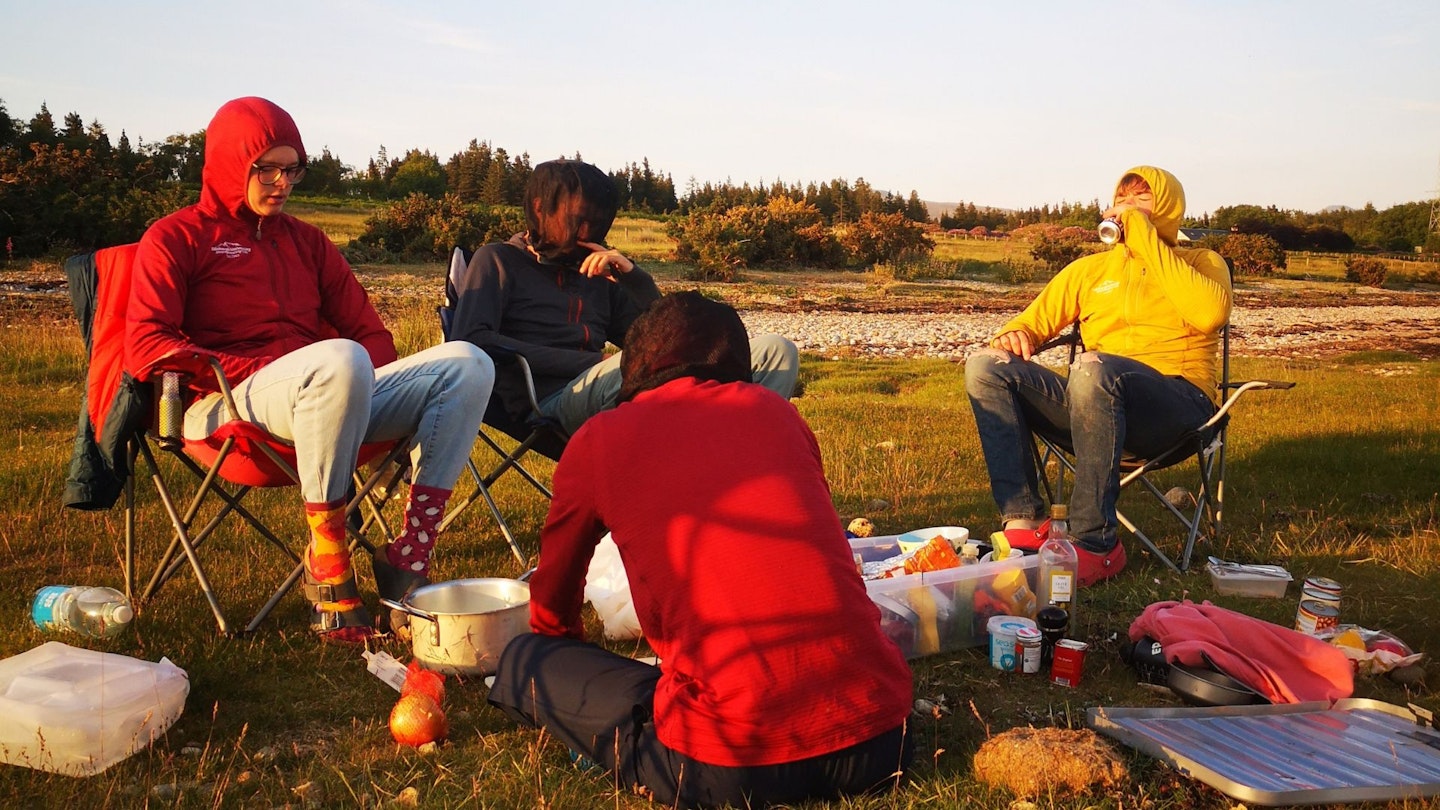
Materials
Unlike more consistent and focused gear like waterproof jackets, slippers can be constructed from a hugely diverse pool of materials. If you want to be able to traverse dewy grass or wet rock, be sure that you're picking something with a durable sole, EVA being the staple choice since it's more flexible and comfortable than traditional rubber.
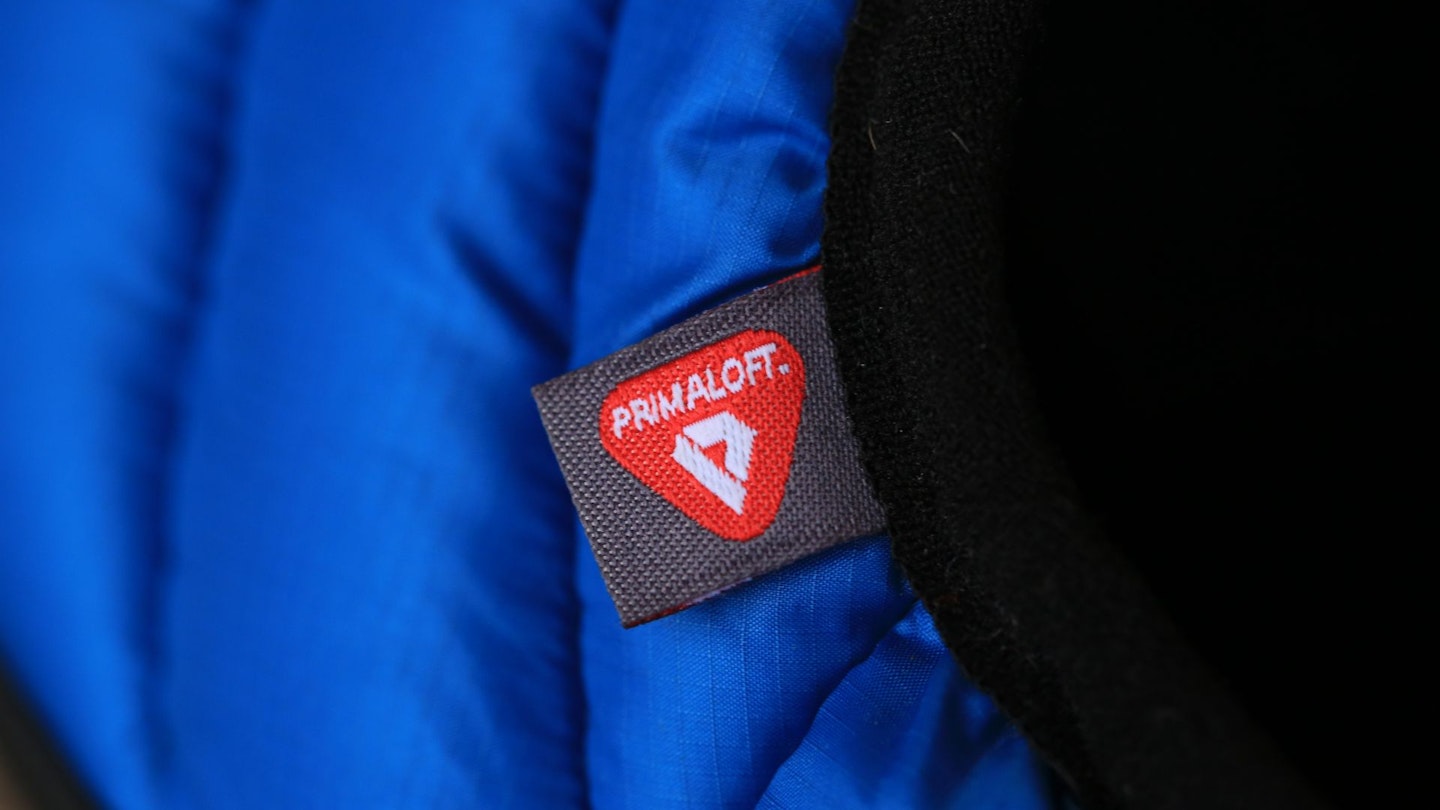
Any slippers opting for 100% EVA construction are going to leave your toes blue in any cold climates. Be sure to consider how insulating your material is. Polyester isn't super protective, but it is breathable and would suit most seasons.
If you're heading anywhere icy, fleece slippers are the bare minimum choice, and you should certainly consider going all-in on a down insulation slipper like our Montane choice.
Style
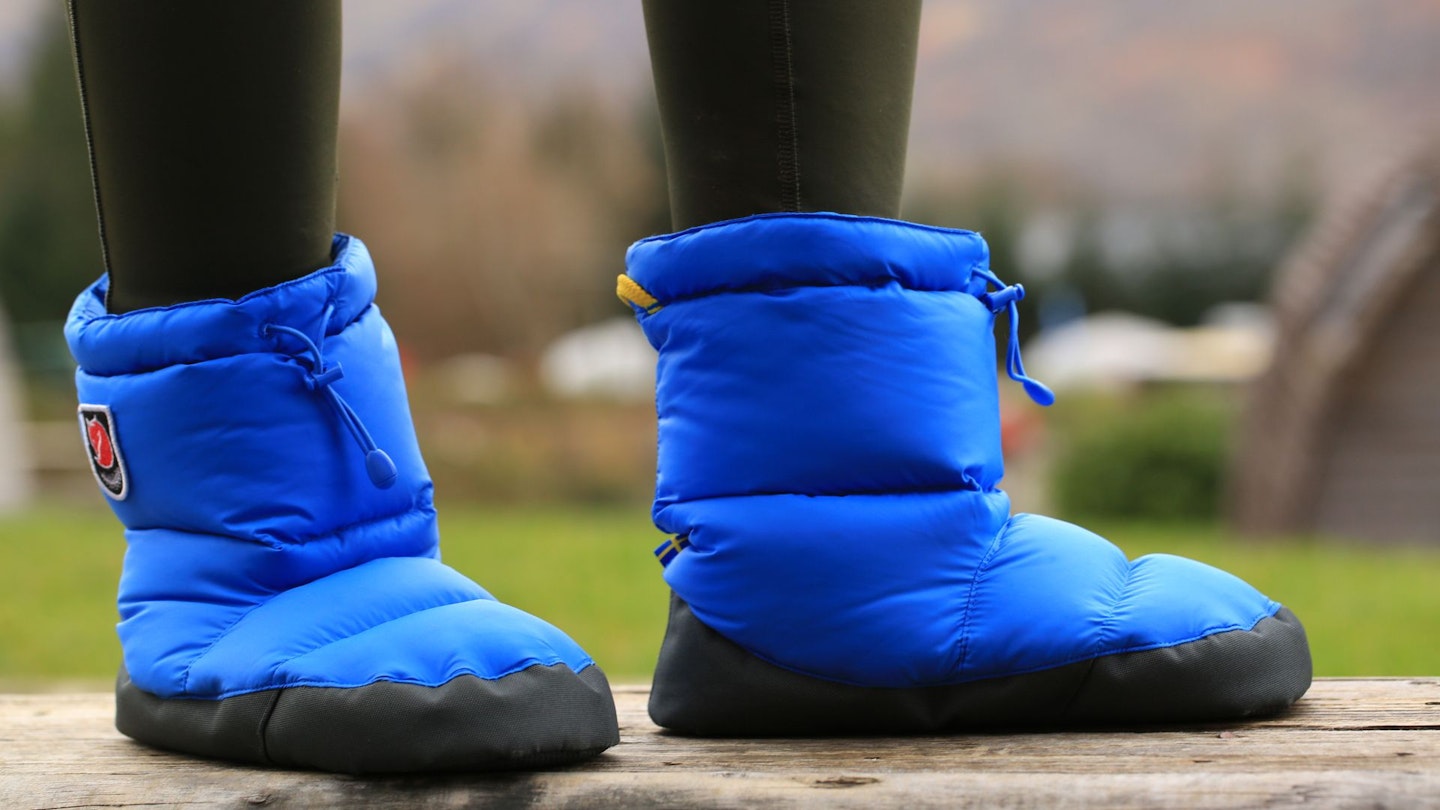
As with material, your choice of slipper style should reflect the context in which you'll be wearing them. If you know that you're headed for mountain huts, then your options can range from a cozy fleece boot with a fabric sole to a minimalist slider for shuffling around on a less-than-clean floor.
Remember that big booty slippers can get seriously warm, so if you're more of a fair-weather camper, a more minimalist option would be best. In fact, you might even want to consider a pair of hiking sandals, some of which are also ideal for lounging around the campsite - though they won't save you from being nibbled by wee beasties in quite the same way.
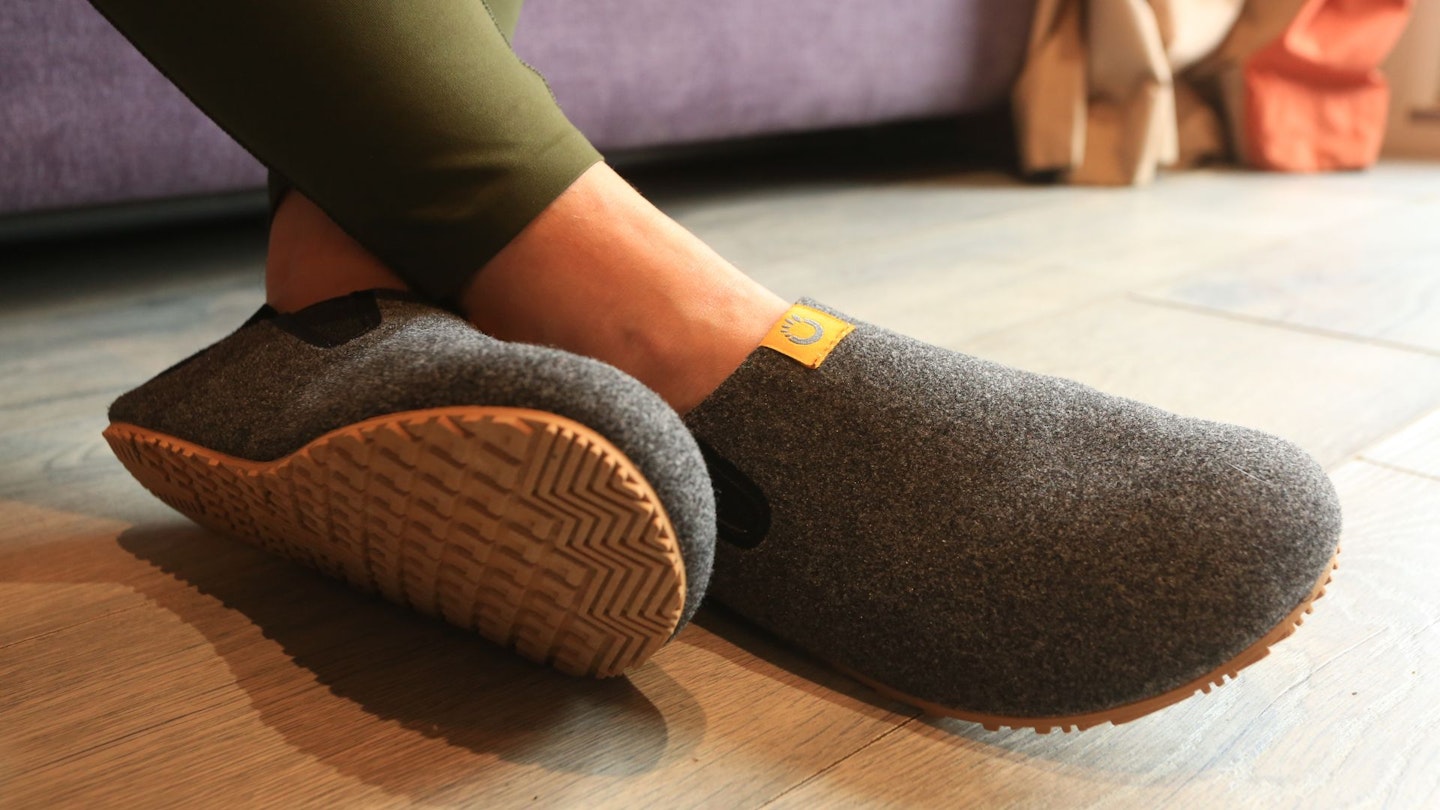
About the author
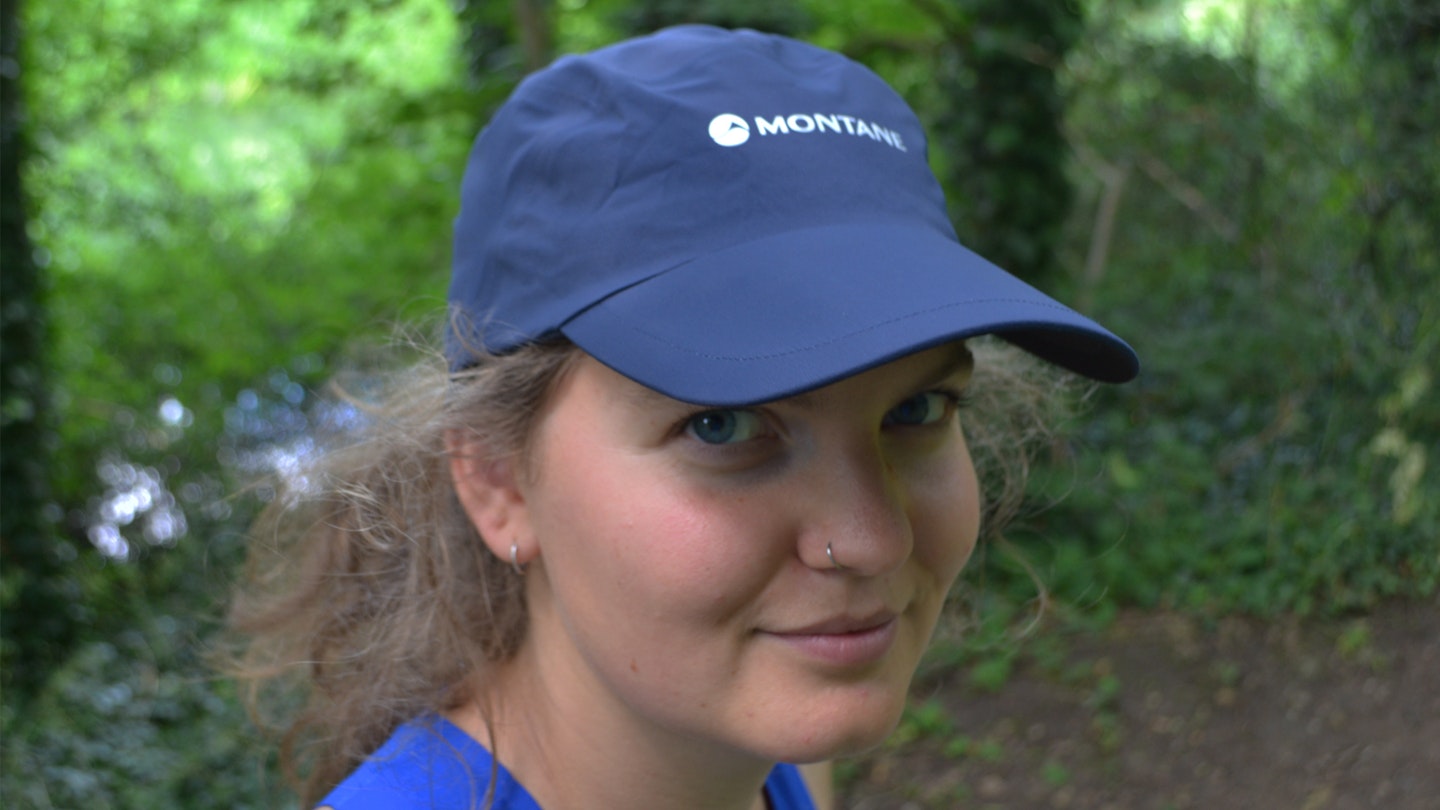
Fliss Freeborn is a writer and gear tester for Live For The Outdoors. During her time at university, she spent considerably more days in a tent in the Scottish Highlands than she did in the library, which she highly recommends as a study strategy.
Fliss also believes that life is too short to eat bad food outdoors, and that cooking good scran while in the hills is easier than you might think with the right kit and some forward planning – yes, you can always do better than a pot noodle.


